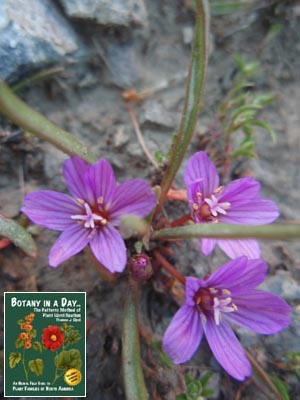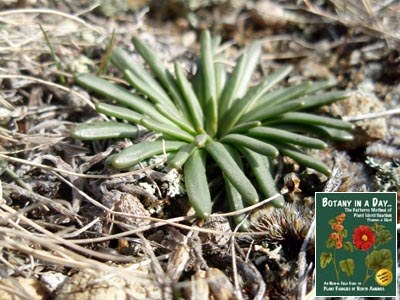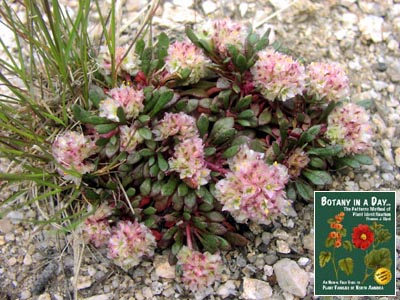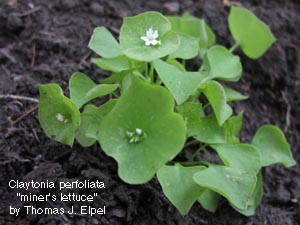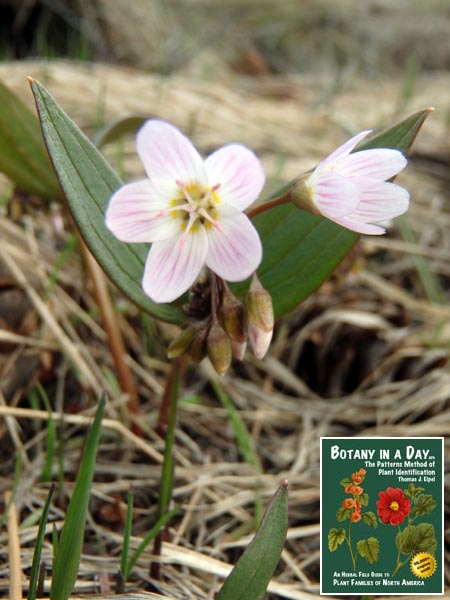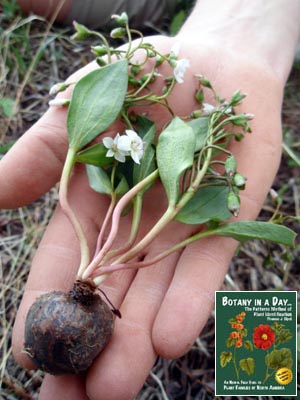
Montiaceae
Plants of the Miner's Lettuce Family
Formerly included within the Purslane family.
What would you eat if you joined the gold rush and set up camp miles away from the nearest garden or grocery store? You might try miner's lettuce. The name has been given to many edible plants found near mining camps, but it especially stuck with a few plants in the Miner's Lettuce family.
Plants of the Miner's Lettuce family are succulent herbs with regular, bisexual flowers. There are usually 2 sepals and 5 petals, but a few species have 2, 3, 4, or 6 petals, and the bitterroot (Lewisia) has up to 18 petals. (In some books the 2 sepals are considered bracts (modified leaves) and the petals are considered colored sepals.) There may be an equal or double number of stamens as petals, or they may be numerous. The ovary is positioned superior and consists of 2 to 8 united carpels forming a single chamber. It matures as a capsule that opens along three seams, or by a cap-like top. A few species prefer the shade of trees, but most members of this family seem particularly adapted to dry areas with intense sunlight. Worldwide, there are about 14 genera and 500 species. About 8 genera are native to North America. Most are found in the western states. The bitterroot (Lewisia) is the state flower of Montana. Many plants in the family contain some amount of oxalic acid, resulting in a mild lemon-like taste.
All members of the Miner's Lettuce family were formerly included in the Purslane family, but genetic analysis revealed that purslane itself was too distantly related from everything else in the family, so purslane kept the famiy name, Portulacaceae, and everything else was separated out into the new Miner's Lettuce family.
Key Words: Succulent plants often growing in intense sunlight. Two sepals.
Please e-mail Thomas J. Elpel to report mistakes or to inquire about purchasing high resolution photos of these plants.





 Wildflowers-and-Weeds.com
Wildflowers-and-Weeds.com 

